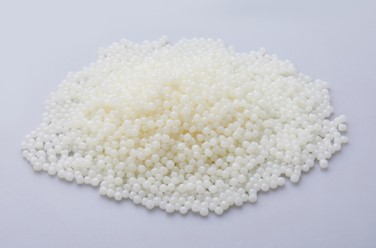- Molecular Formula: (C6H14NO4P)n
- Molecular Formula: (C14H10NO6P)n
- Molecular Formula: (C12H8I2NO2P)n
- Molecular Formula: (C4H10NPO2)n
- Molecular Formula: (C22H28N3O4P)n
- Molecular Formula: [N=P(OCH2CF3)1.6(OC6H2Cl3)0.4]n
Poly[bis(alkoxy)(aryloxy)phosphazene], 2,2,3,3,4,4,5,5-octafluoropentoxy, 2,4-dichlorophenoxy substituted
- Molecular Formula: [N=P(OC6H3Cl2)0.6(OC5H3F8)1.4]n
- Molecular Formula: [N=P(C7H4F3)1.0(OC6F5)1.0]n
- CAS Number: 26085-02-9
- Molecular Weight: 115.88600
- Molecular Formula: (Cl2N P)n
- CAS Number: 28212-48-8
- Molecular Formula: (C12H10NPO2)n
- CAS Number: 28212-50-2
- Molecular Formula: (C4H4F6NPO2)n
- CAS Number: 79839-05-7
- Molecular Formula: (C8H16N3O4P)n
Introduction
Polyphosphazene is a new type of inorganic polymer with phosphorus and nitrogen as the basic skeleton. Polyphosphazene is resistant to water, solvents, oils, chemicals and high and low temperatures. In addition, polyphosphazene also has good optical and photothermal stability. Depending on the attached side groups, polyphosphazenes can be hydrophilic or lipophilic, can be easily degraded by water or stable to water, and can be conductors, semiconductors, or insulators. The main chain of polyphosphazene is composed of nitrogen and phosphorus atoms with alternating single and double bonds, which has a natural flame-retardant synergistic effect and thermal stability.[1-2] Therefore, the molecular structure of polyphosphazene can be used to design flame retardants with excellent performance, which can improve the comprehensive properties of materials, especially flame retardancy, thermal stability and mechanical properties.

Preparation
There are two common methods of synthesizing polyphosphazenes. One is to first synthesize the intermediate polydichlorophosphazene (PDCP), and then synthesize polyphosphazene through a substitution reaction. Another approach is to synthesize monomers with substituents and then polymerize them to form polyphosphazenes. The preparation of polyphosphazene uses sodium hydroxide, potassium hydroxide, potassium carbonate, sodium carbonate, cesium carbonate, triethylamine and other compounds as acid-binding agents. For example, Raja et al. used THF as solvent and triethylamine as acid-binding agent to react PDCP with different proportions of acetaminophen and glycine methyl ester for 48 h to obtain polyphosphazenes substituted with acetaminophen and glycine methyl ester. The obtained polymers were used in drug delivery studies.[3]
Application
Based on its excellent properties, polyphosphazenes are widely used in flameresistant material, medical industry, film industry and others.
The main chain of polyphosphazene is composed of P and N elements, which endow polyphosphazene with good flame retardancy. Based on its excellent flame retardancy, high and low temperature resistance, low smoke emission and elastomer properties, polyphosphazene is widely used in high-performance composite materials, such as fire-resistant and high-temperature resistant textiles, rocket and missile coating materials, aircraft sealing materials and heat-resistant adhesives, etc.
The main chain structure of polyphosphazene is composed of P and N elements. By optimizing the structure of side chain substituents, polyphosphazene has good biocompatibility and in vivo biodegradability. Based on the above properties, a variety of polyphosphazene materials have been reported to be used in drug-controlled release, stent materials and medical suture materials.
The polymer membrane material prepared by polyphosphazene is widely used in chemical industry, energy, packaging and other fields. The ethanol-modified polyphosphazene membrane material is a homogeneous membrane with good elasticity and can be used as an oxygen-nitrogen separation membrane material with good air permeability. In addition, compared with the hydrogen permeability of polysulfone and polyimide, the hydrogen permeability of the composite membrane prepared by polypropylene and polyethoxysophosphoronitrile is twice as high as that of polypropylene and polyimide, which is a new membrane material with potential application value.
If you are interested in our polyphosphazenes, please contact us immediately!
References
- Wu, Z. et al. Dynamic Polyphosphazene Networks with Modulating Shape Memory and Self-Healing Capacity by Double Coordination Interactions. Macromolecular materials and engineering. 2021, 306(10).
- Li, Z. et al. Polyphosphazene Elastomers with Alkoxy and Trifluoroethoxy Side Groups. ACS Applied polymer materials. 2020, 2(2): 475-480.
- Ullah, R.S. et al. Synthesis of polyphosphazene and preparation of microspheres from polyphosphazene blends with PMMA for drug combination therapy. Journal of materials science.2019, 54(1): 745-764.






![Poly[bis(1-(ethoxycarbonyl)-2-phenylethylamino)phosphazene]](https://resource.bocsci.com/structure/poly%5Bbis%281-%28ethoxycarbonyl%29-2-phenylethylamino%29phosphazene%5D.gif)
![Poly[bis(alkoxy)(aryloxy)phosphazene], 2,2,2-trifluoroethoxy, 2,4,5-trichlorophenoxy substituted](https://resource.bocsci.com/structure/poly%5Bbis%28alkoxy%29%28aryloxy%29phosphazene%5D%2C%202%2C2%2C2-trifluoroethoxy%2C%202%2C4%2C5-trichlorophenoxy%20substituted.gif)
![Poly[bis(alkoxy)(aryloxy)phosphazene], 2,2,3,3,4,4,5,5-octafluoropentoxy, 2,4-dichlorophenoxy substituted](https://resource.bocsci.com/structure/poly%5Bbis%28alkoxy%29%28aryloxy%29phosphazene%5D%2C%202%2C2%2C3%2C3%2C4%2C4%2C5%2C5-octafluoropentoxy%2C%202%2C4-dichlorophenoxy%20substituted.gif)
![Poly[bis(aryloxy)phosphazene], 3-trifluoromethylphenoxy, pentafluorophenoxy substituted](https://resource.bocsci.com/structure/poly%5Bbis%28aryloxy%29phosphazene%5D%2C%203-trifluoromethylphenoxy%2C%20pentafluorophenoxy%20substituted.gif)
![Poly[nitrilo(dichlorophosphoranylidyne)]](https://resource.bocsci.com/structure/26085-02-9.gif)

![Poly[bis(trifluoroethoxy)phosphazene]](https://resource.bocsci.com/structure/28212-50-2.gif)















